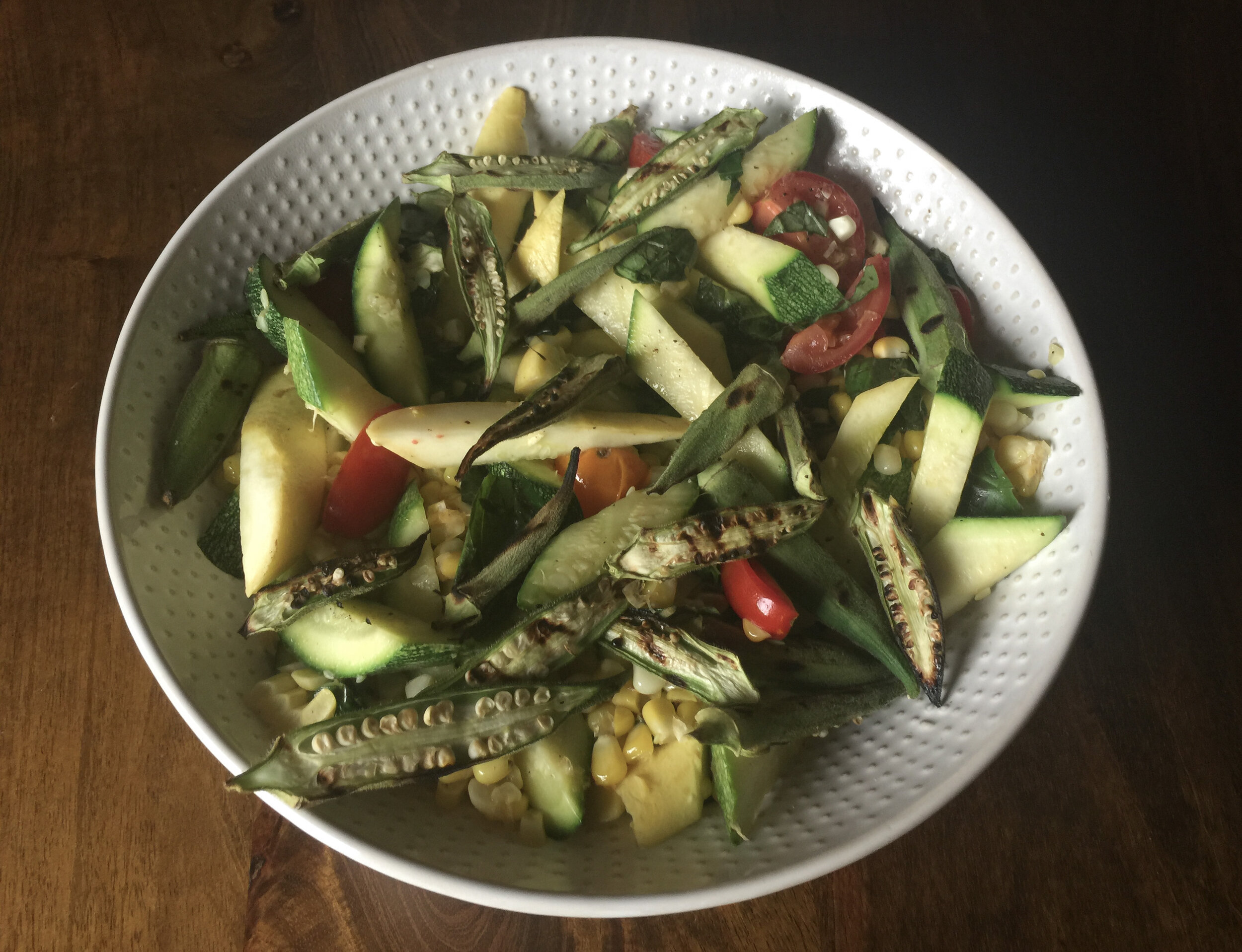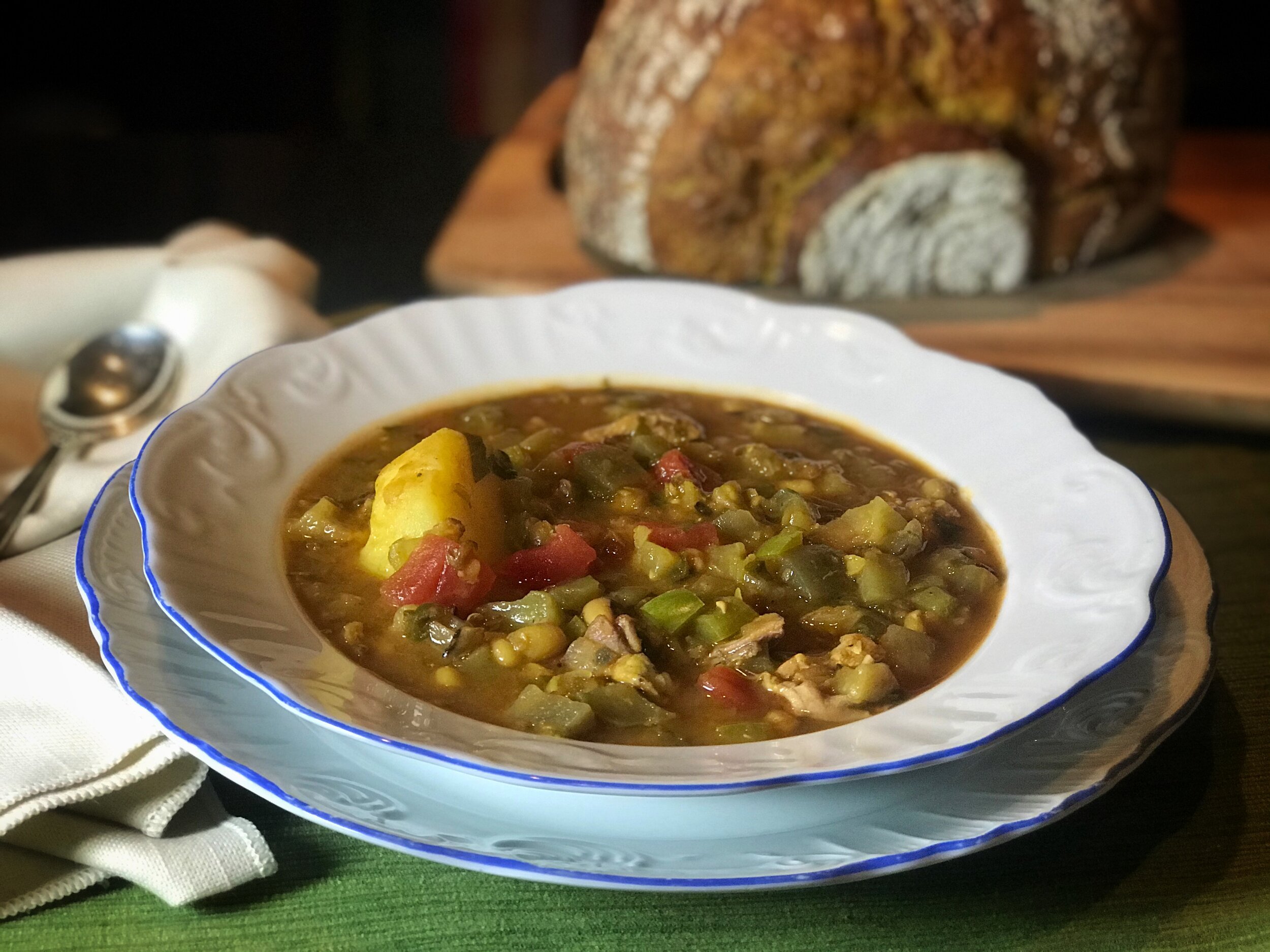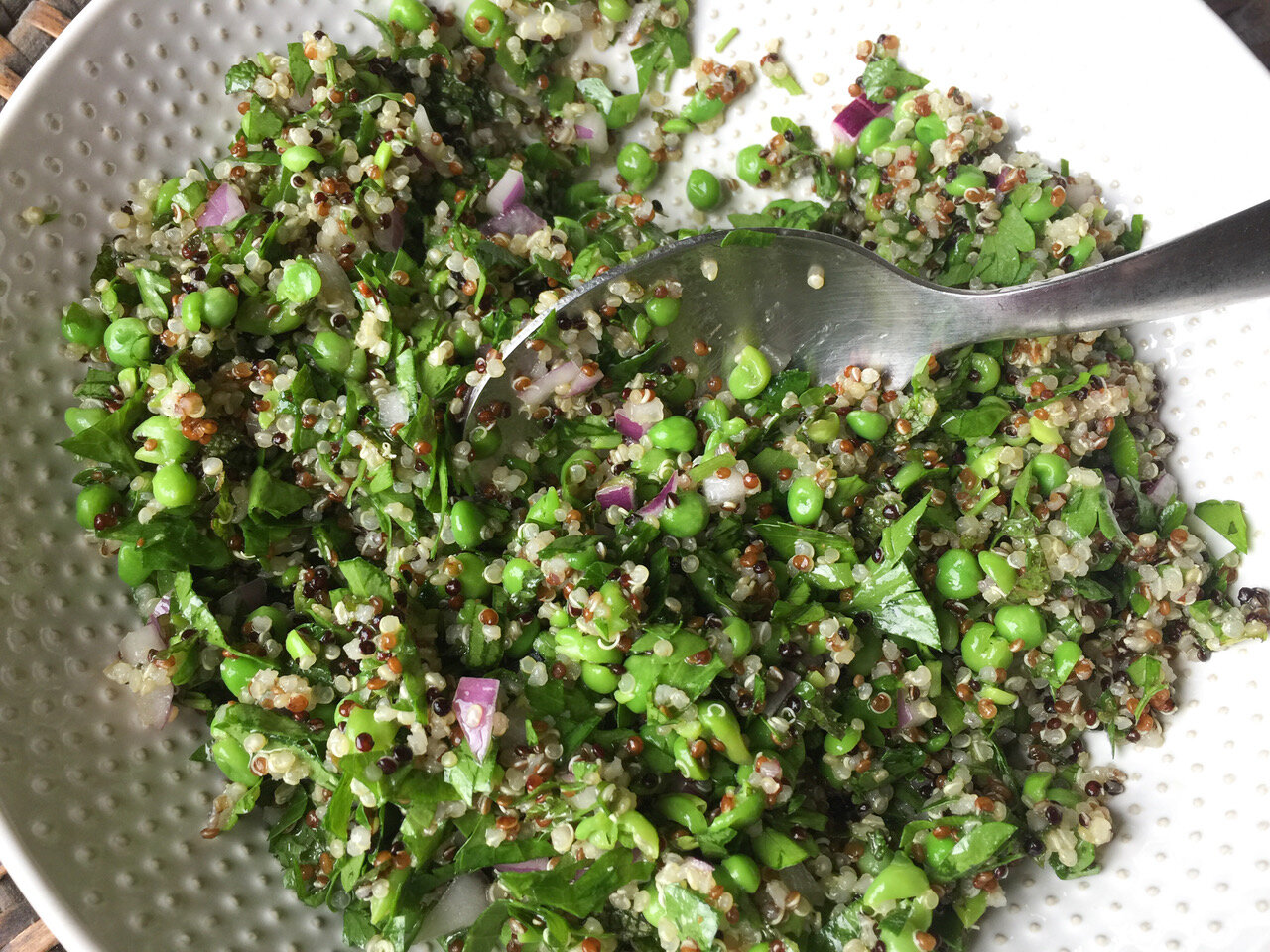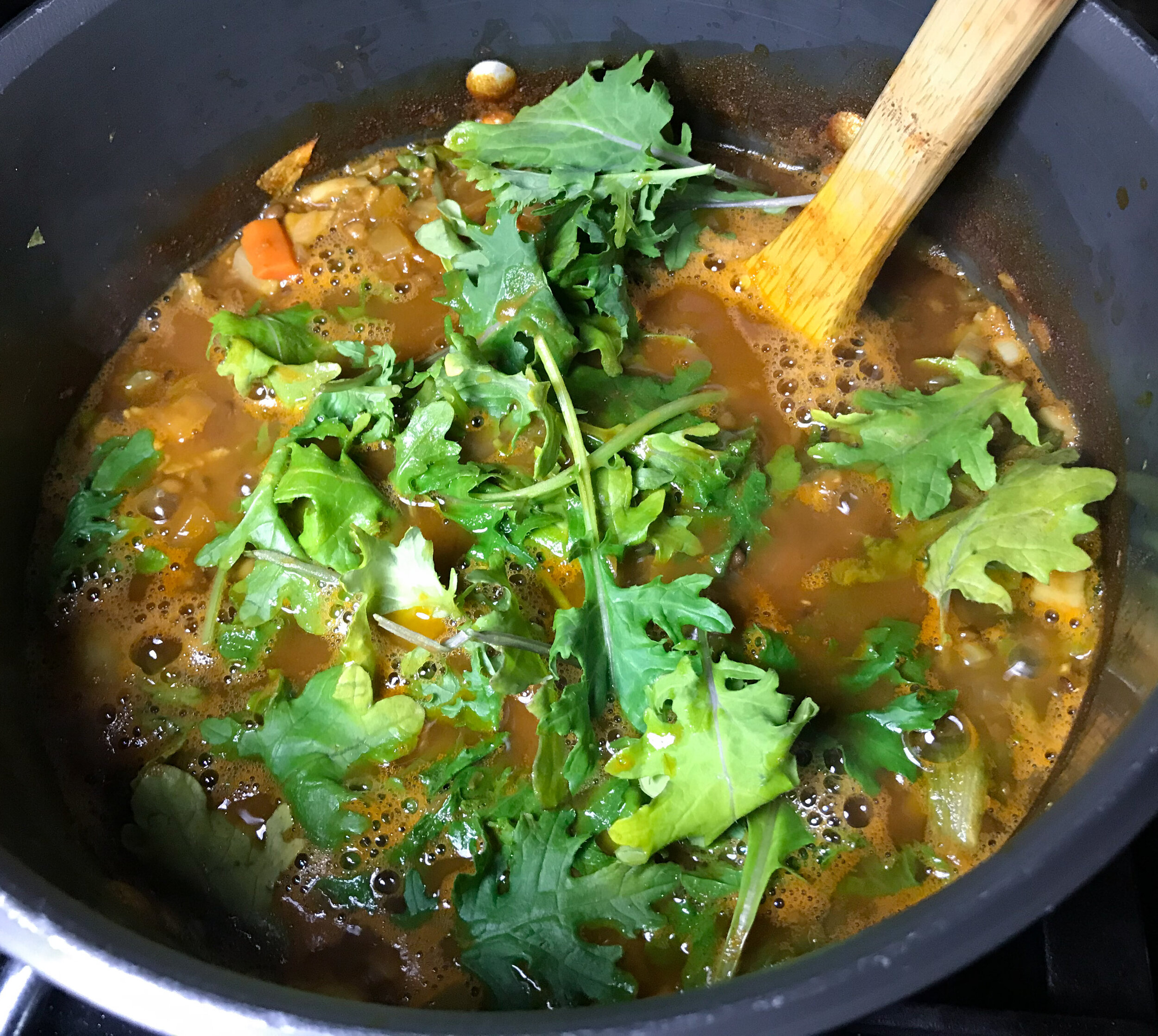Summer Produce Special, Part II: Zucchini
We feel your zucchini abundance-state here at Cooks Without Borders, where we’ve been grating, shaving, slicing, dicing, salting, draining, sautéing, roasting, steaming and sashimi-ing zucchini round the clock to help you make the most of the season’s inevitable bumper crop.
• One dish — Stuffed Zucchini with Pine Nut Salsa — is so outstanding it shook the two courgette-fatigued fellows with whom I shelter out of their summer-squash stupor.
“Amazing,” said the older one. “I would eat this again tomorrow!” (We did.)
“Wow,” said the younger. “Whose recipe is this?” Ottolenghi’s, I replied — from his 2018 cookbook Ottolenghi Simple. “He is a genius,” proclaimed the younger zucchini critic.
I had been skating on thin ice with the vegetable when this show-stopper saved us. It was maybe only day 3 of zucchini trials, but junior and elder had already hit the zucchini wall. They are weak, after all, and lack summer squash stamina.
I had set my sights, this particular evening, on two possible Ottolenghi recipes. The exhausted eating panel chose the Stuffed Zucchini, pictured above. Excellent call: Its filling is rich with Parmesan and egg, bright with height-of-season heirloom cherry tomatoes, plumped with bread crumbs and set with a golden-brown crust inside a perfectly roasted shell that maintained integrity but melted at fork’s touch. On top of that, a deeply herbal salsa — at once dusky (oregano) and bright (thanks to lemon) — made meaty and crunchy with toasted pine nuts.
Do try it; I think you’ll love it. It’s so delicious, you can let it stand proudly as centerpiece main dish, even probably for dyed-in-the-wool carnivores. (But oh, yes, it would also be great with lamb. Or chicken.)
Once your swooning subsides, consider the possibilities for your next zucchini triumph. For you know there will be more zucchini!
Here are other faves:
• Raw Zucchini Salad with Green Olives, Mint and Pecorino. I first learned the joys of raw zucchini in the early 00’s from Russ Parsons, the L.A. Times’ longtime columnist (“The California Cook”), who taught us that salting thin-sliced or shaved raw zucchini and letting it sit a few minutes turns it delightfully silky and slippery, seeming almost to cook the flesh while keeping it firm.
For years I had a Parsons salad in my arsenal and pulled it out often. Slice zucchinis in half vertically, then cut them into thin half-moons. Toss with salt in a colander and let sit for 15 or 20 minutes. Transfer to a bowl and dress with minced garlic, lemon juice, olive oil, freshly ground black pepper or red pepper flakes and fresh herbs — mint is especially nice, but you can do any combo of mint, dill, parsley or basil. The Ottolenghi recipe makes me think oregano would be smashing as well.
Raw Zucchini Salad with Green Olives, Mint and Pecorino from A16 Food + Wine
Nate Appleman and Shelly Lindgren took the salting-raw-zucchini technique to delicious heights in a recipe published in their 2008 cookbook, A16 Food + Wine, named for their beloved Southern Italian spot in San Francisco. Their salad marries ribbons of zucchini carpaccio with a brilliant trio of complementary flavors. I’d never have thought of green olives and mint together, but the combination sings — especially with the bright, pure flavor of Castelvetrano olives (green Cerignolas would be great, too). Earthy pecorino smooths it out and pulls it together.
• We’ve been thinking about Barry’s Insanely Delicious Zucchini Fritters since test-driving the recipes in José Andrés’ Vegetables Unleashed led us to a zucchini fritter recipe that didn’t quite do it for us (the batter was thin and the fritters ran all over the pan). Barry’s Insanely Delicious are little flavor-bombs, soft and packed with herbs (dill, mint and parsley) on the inside, crisp on the outside and warm, served with a cool and tangy yogurt sauce. Pop one in your mouth and it’s hard to stop there. They’re brilliant bites for your next Zoom Happy Hour, if that’s still a thing.
Barry’s Insanely Delicious Zucchini Fritters
• Speaking of José Andrés, another zucchini recipe in that cookbook turned out to be one of our favorites ever: Grilled Zucchini with Lots of Herbs. It’s as simple and wonderful as it sounds and looks, with a sprinkle of za’atar — the Levantine herb and spice mix — to keep things zippy.
Grilled Zucchini with Lots of Herbs from José Andrés’ ‘Vegetables Unleashed’
• If you like zucchini noodles, you will love Camarón con Fideos de Calabacitas, from Adán Medrano’s Don’t Count the Tortillas: The Art of Texas Mexican Cooking.
Camarón con Fideos de Calabacita (Shrimp with Zucchini Ribbons) from Anán Medrano’s ‘Count the Tortillas’
• Another dish that probably has roots in the Texas Mexican cooking known as comida casera, Rosa de la Garza’s Texas Chicken is an easy, delicious pseudo-braise that makes luscious use of abundant zucchini (and any other summer squash that needs a home), along with corn, tomatoes, onions, cilantro and serrano chile. It has been one of my favorite late-summer dishes since I was a kid growing up far from Texas, in Southern California. (It’s a pseudo-braise because you don’t actually add liquid; the juices that end up braising all come from the vegetables.)
Rosa de la Garza’s Texas Chicken (the chicken formerly known as The Chicken that Killed Grandpa)
• A super-flexible dish we call Warm Summer Salad Without Borders is another late summer stunner — and a great way to feature as much zucchini as you want to throw at it, along with grilled corn, tomatoes and — if you like — grilled okra. It makes a lovely light dinner when it’s still blazing hot, or a warm pick-me-up for when you’re a little sad the season is on the way out.
And hey — I sometimes toss some grilled okra on top of Rosa de la Garza’s Texas Chicken, too. The Warm Summer Salad is kind of like a vegetarian salad version of that dish.
Warm Summer Salad Without Borders
• Last but certainly not least — as it’s one of my favorite things in the world to cook and to eat — a Chicken and Lamb Couscous will usher summer into fall, pulling a pound or two of zucchinis in its wake. As the season changes, keep it in mind. We offer an easy version that uses canned garbanzos and five-minute couscous grains and slower OG version that has you soak dried chickpeas overnight and steam and fluff the couscous grains two or three times. Both are tucked into the same recipe, as you might want to combine them (dried chickpeas + quick couscous grains, for instance). On our to-do list: Creating or turning up a stellar harissa recipe.
Chicken and Lamb Couscous (with . . . zucchini!)
RECIPE: Stuffed Zucchini with Pine Nut Salsa
RECIPE: Raw Zucchini Salad with Green Olives, Mint and Pecorino
RECIPE: Barry’s Insanely Delicious Zucchini Fritters
RECIPE: Camarón con Fideos de Calabacitas
RECIPE: Grilled Zucchini with Lots of Herbs
RECIPE: Rosa de la Garza’s Texas Chicken
















































